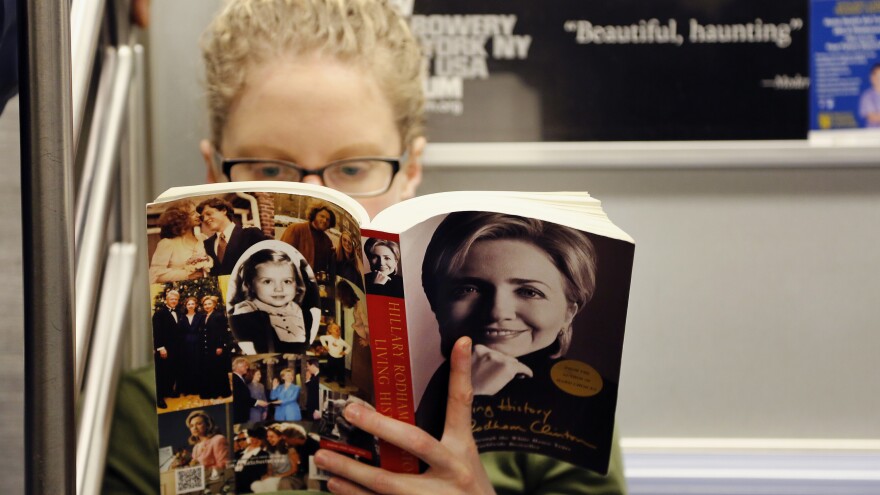Three of the five candidates on both sides of the aisle hail from New York in some way or another, so which candidate truly has a home court advantage is questionable.
But, demographics might offer a clue.
Historical and current U.S. Census data suggest that New York's demographics are unusual compared with other states that have already voted this primary season. No doubt, New Yorkers have their own state of mind, but, a few demographic trends help us understand the electorate.
A few things to watch:
1. Urban
In 2008, half of the state's Democratic primary voters came from the New York City area. And voter registration data as of April 1 predict a similar picture this year — 52 percent of active Democratic voters reside within New York City.
New York is a diverse metro area; two-thirds of New Yorkers are black, Latino, Asian or multiracial. Hillary Clinton, so far, has shown an advantage with minority voters, winning African-Americans by huge margins across the country. Not all voters of a certain race vote the same way, but there have been patterns this campaign season that offer clues on how elections are likely to play out.
NPR's Tamara Keith has reported that one of Clinton's biggest demographic weaknesses in the primary race has been her appeal to white men. But New York has a much smaller white male population than other states. In the 2008 primary, only 29 percent of Democrats were white men.
Bernie Sanders has been doing better with white voters. In the most recent primary election — Wisconsin on April 5 — exit polls show Sanders beat Clinton by 19 percentage points (59 to 40 percent). But it's important to remember, New York just doesn't have as many white voters at stake.
2. Young
It's worth pointing out that many urban voters are young. The urban and youth populations are not mutually exclusive. In 2008, about 15 percent of Democratic primary voters across New York were between the ages of 18 and 29, and many of them lived in the New York metro area.

And, so far this campaign, Sanders has consistently trounced Clinton in the 18- to 29-year-old demographic. According to exit poll data, Clinton won this age group in only two states: Alabama and Mississippi. On average, Sanders is winning these young voters by 41 points.
Sanders performs well with young voters of all races and ethnicities. Young Asian, Latino and African-American voters in a number of states have preferred Sanders over Clinton. But young voters as a whole usually have the lowest voter turnout of any age group, and so Clinton has been able to keep her losses at a minimum by relying more on older voters.
3. No independents
The other advantage for Clinton is that New York is a closed primary. In other words, independents are not allowed to vote — and that's bad news for Sanders. As of March 15, 40 percent of Sanders' support was coming from independents, as the Washington Post's Philip Bump noted.
4. Democratic turf
On the Republican side, New York is Donald Trump's state to lose. He's consistently polling above 50 percent, and that's, well, huge. Trump often wins states with a plurality of the vote, but never with an outright majority. In fact, not once this campaign season has Trump broken the 50 percent threshold in any state.
In his home state of New York, though, Trump is polling above that key mark. And that's important because if he gets above 50 percent in every congressional district, he will take home all 95 of the state's delegates.
It's not just because he's a familiar face. Sure, the Trump campaign is headquartered in New York, and Trump owns multiple properties around town, but demographically, New York City is Trump territory.
As David Wasserman with the Cook Political Report recently wrote for FiveThirtyEight, Trump does well in blue terrain. He won Cook County, Ill. (home to Chicago), for example, by more than 15 points. Wasserman argues that Trump is dominating majority-minority congressional districts by focusing on the white working class who live in those areas.
"Outside of Cruz's home state of Texas, Trump has won 15 of 17 majority-minority districts, or 88 percent," Wasserman wrote. "By comparison, Trump has carried only 51 of 79 majority white districts (again excluding Texas), or 65 percent."
5. "New York values"
OK, so this last point is more about values than demographics. Throughout the primary campaign, Ted Cruz has relentlessly tried to court Christian conservatives. But, as we've shown previously in our Perfect State Index, New Yorkers aren't particularly religious.
About 45 percent of New Yorkers say religion is "very important" in their lives, compared to about 53 percent nationally. For some perspective, that number is upward of 70 percent in some of the traditional Bible Belt states.
But the values battle between Cruz and Trump is about much more than religion — it's about territorial pride. In earlier voting states, Cruz had tried to rally voters by knocking those so-called "New York values." In a GOP debate in January, Cruz used the line "New York values" as an insult aimed at Donald Trump. (NPR's Sarah McCammon has reported on the full back story of that moment and its potential impact in New York politics.)
Cruz has essentially spent months campaigning against New York, and now he's trying to campaign in New York. It's a thin tightrope to walk. Last week in the Bronx, reporters asked Cruz about his "New York values" comment, and he doubled down.
"The people of New York know exactly what those values are," he said. He tried to clarify: "It's the values of the liberal, Democratic politicians."
New Yorkers don't seem persuaded. Recent polls show Cruz in last place, trailing both Trump and Ohio Gov. John Kasich.
Copyright 2021 NPR. To see more, visit https://www.npr.org.








